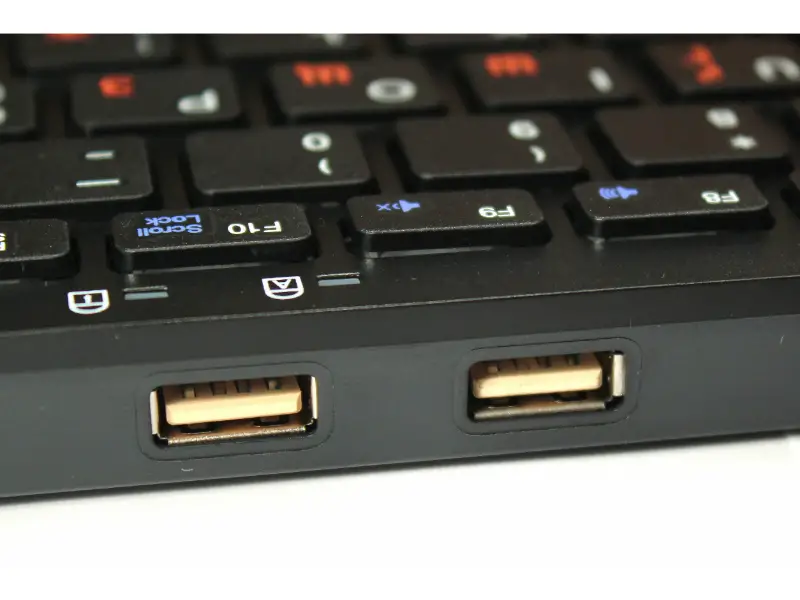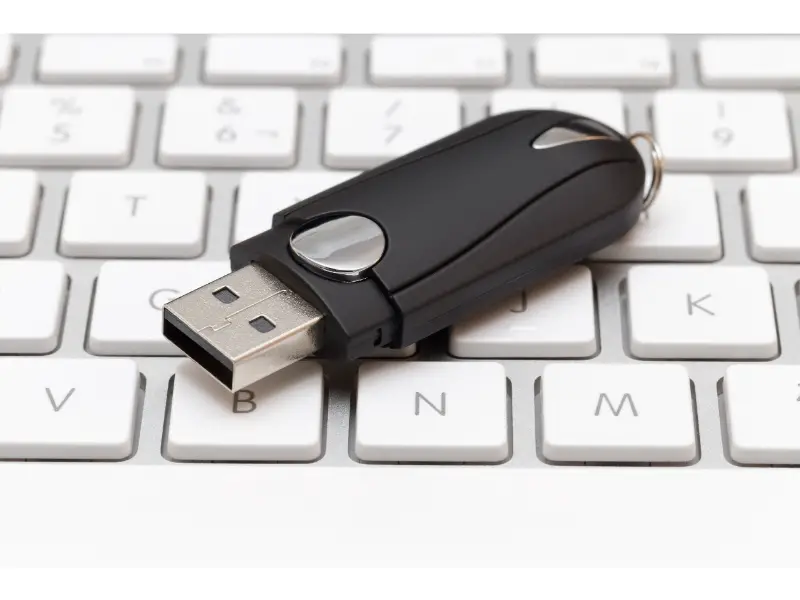Disclaimer: This post may contain affiliate links, meaning we get a small commission if you make a purchase through our links, at no cost to you. For more information, please visit our Disclaimer Page.
The two USBs on your keyboard is a result of the increasing number of technical devices requiring direct computer access. So, the USBs are important extensions of your overall USB ports and helps make your life easier.
Table of Contents
What Is the USB Port on My Keyboard For?
Various sectors of the world are experiencing technological advancements today, including the computer industry. As a result, the IT market is seeing an ever-increasing amount of computer-related devices every day, along with an ever-growing demand for them.
Computer manufacturers, therefore, believe that if one user would want to connect all these devices to the computer, or at least half of them, there would need to be additional USB ports. Among these devices are high-tech video cameras, printers, smartphones, network adapters, disk drivers, and many more.
A typical computer model has at least 8 USB ports. Four ports at the rear of the CPU, two at its front, and two on the monitor. These, however, differ depending on the computer models. So, if you were to buy a keyboard today, approximately 45 percent of the current new models would include the two additional USB ports.
In total, this system has 10 USB ports in a single computer setup while it is also possible to plug USB hubs into either of the USB ports to increase the number of ports. So, essentially, the USB ports on your keyboard are simply extension ports.
Do Keyboards USBs Provide Power?
Early on in an era when wireless keyboards did not exist, cabled keyboards were quite hard to connect to any computer port. So PC users had tough times in finding a compatible port for their keyboards. If any was compatible, the next step was to mark that port, so if they ever dismantled the computer they would still manage to recall it when installing the keyboards back.
The limiting factor in computers is the fact that every computer port sources its power differently, with each port having varying power levels and data transfer rates. This leads to the keyboard’s USB slot dissipating less power than it consumes.
What Are the Differences Between USB 3.0, 2.0, and 1.0?
Your PC probably has the three USB models. With each one of them having varying power levels, their speed and power dissipated by the keyboard USB slots also differ. Below are some of their obvious differences that you should be able to verify whether they match on your computer.
The differences are categorically in:
Data Transfer Rates
With the introduction of USB 1.0 to early generation computers, its transfer speed was 12 Mb per second but later grew up to 480Mb per second. The USB 2.0 and 3.0 on their side grew from 5 GB per second to their current rate of 10 GB per second, with expectations for higher rates.
When USB 3.0 and 2.0 came into existence, they were only capable of passing data in one direction. Since then, there has been a development in the ports now transferring data in both directions. The latter is a huge milestone in the industry guaranteeing a timely efficient time when using any external devices.
So the current multidirectional data transfer functionality allows both sending and receiving data simultaneously; thanks to the half-duplex data transfer mode of USB 2.0, and full-duplex data transfer of USB 3.0.
- Full-Duplex Mode: data transfer is similar to a telephone call where traffic flows simultaneously in both directions.
- Half Duplex: Although both the receiver and sender can send data at the same time, this is still a one-way mode of data transfer. It is more like each transmission waits for the other to get to its destination before sending its own.
Power Dissipation
On average, a computer keyboard consumes 0.5W/h when powered by a 500mA/5V or a 100mA/5V. This can however differ from one type to another, depending on the type of the keyboard. For instance, gaming keyboards incorporate decorative lighting systems that are quite energy-intensive on their own. Based on the type of keyboard you have, you can determine how much power it consumes.
With USB 2.0 and 3.0, the maximum current is 1.8A but the maximum voltage is up to 5V and USB 3.1 and higher dissipates up to 20V with a current of 5A. Nevertheless, these power levels differ between computers. This is evident in USB ports of gaming computers sourcing their power differently than those of other computers due to their exceptional energy consumption.
Different Appearance
Even though the three USBs appear similar in size and shape, their key distinguishing feature is the color of the plastic parts contained inside their housing. White plastic appears on USB 1.0 and black plastic on USB 2.0, while blue plastic appears on USB 3.0. In case you find red-colored plastic in a USB port that indicates that the USB is always active in sleep and standby modes.
To make sure any device you will be connecting to your USB keyboard has sufficient power and can operate in full-duplex mode, identify the right colors on your computer’s USB ports.
Is It Necessary That the Keyboard Has 2 USBs
Most keyboards have USB 1.0 ratings, offering only one-way data transfer, so it is important to note that with such, an additional USB port will always come in handy to bypass any lagging port.
Additionally, the keyboards have a transmission rate of between 12 Mb and 480 Mb through their ports. In today’s devices, such transmission rates are quite low, since most electronics transmit over three gigabytes per second. So a single port with 480 Mb may be quite slow, therefore having an additional USB will be important in facilitating a faster and more efficient transfer.
The only difference between these ports is that the functions of each differ, so you may wish to connect those devices with less sensitive data through the keyboard’s ports and those with fast data through the computer ports.
There are, however, increasingly more devices with high-tech features coming into existence, so before investing in any smart device it would be best to ensure that it matches your desired features before choosing it. An expensive keyboard with sleeker features that cannot handle your expected level of data transfer would be a huge waste.
Other additional advantages of the keyboard USB’s include:
- Ease of Access: Since your computer is always a distance away as compared to the keyboard, it might be better to connect USB cabled speakers or headphones to the keyboard ports. That is more considerate than having to run long cables from your computer’s CPU.
- Neat Cable Management: Although a large number of devices transmit their data wirelessly, a few others do depend on cables for transmission. You can therefore organize and manage all these cables in a manner that will enhance their neatness instead of piling them up at the computer. So a few from the keyboard USBs and others from the computer tie wrapped neatly is better than disorganized cabling.
- Power Supply: The USB ports on the keyboard deliver a maximum of 5 volts and a current of 1.8 amps. Power like this can run different electronics without affecting the data transmission sector; so the USB’s on the keyboard are equally important for other electronics.
- Port Conflicts Resolution: While 95% of the ports in your computer match the standard USB categories, the connections between various USB ports and other relative devices may conflict. So, a keyboard with a USB extension is therefore very useful and necessary for computer users.
Conclusion
USB ports add functionality to keyboards in a variety of ways, including their usefulness as extensions to existing USB ports and as requirements for gaming computers. With such ports, the players can connect their joysticks directly from the keyboard without having to access the back of the computer. As a result, USB ports are very convenient.


